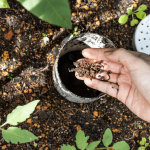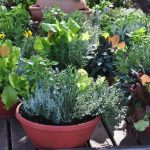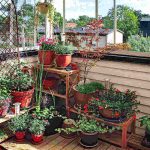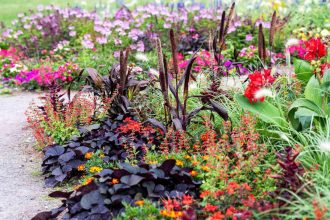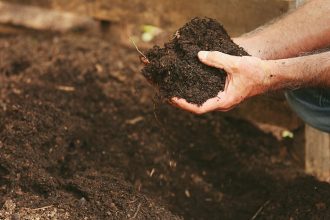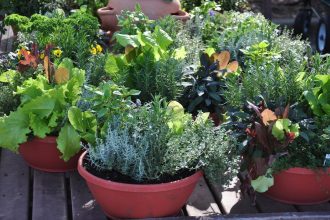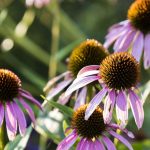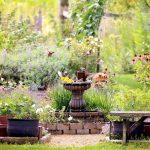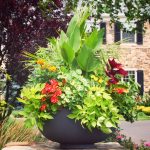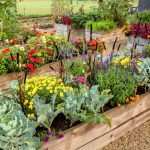Tired of spending every weekend tending to your garden? Wish you could enjoy the beauty of nature without all the work? Look no further! In this article, we’ll explore the art of creating a low-maintenance garden that will not only save you time and energy, but also bring a sense of tranquility to your outdoor space. Say goodbye to endless weeding and watering, and hello to a garden that practically takes care of itself. Let’s dive in and discover the secrets to achieving a beautiful, low-maintenance garden that will leave you with more time to relax and enjoy the great outdoors.

Designing a Water-Efficient Landscape
One key aspect of creating an eco-friendly and low-maintenance garden is . By incorporating thoughtful water-saving techniques into your garden design, you can reduce water usage, save money on your water bill, and help protect the environment. Here are some tips to help you create a water-efficient landscape that is not only beautiful but also sustainable:
Choose native plants: Native plants are well adapted to the local climate and require less water than exotic species. Consider incorporating a variety of drought-tolerant plants that are suited to your region. This will reduce the need for supplemental watering and help conserve water.
Install a drip irrigation system: Drip irrigation systems deliver water directly to the root zone of plants, minimizing evaporation and runoff. This targeted approach to watering can reduce water waste and ensure that plants receive the right amount of moisture they need to thrive.
Use mulch: Mulching your garden beds can help retain soil moisture, suppress weeds, and regulate soil temperature. Consider using organic mulch such as wood chips, straw, or compost to improve water retention and reduce the need for frequent watering.
Capture rainwater: Consider installing a rain barrel or rain garden to capture and store rainwater for later use in your landscape. This sustainable practice can help reduce reliance on municipal water sources and provide a free water supply for your garden.
Choosing Drought-Tolerant Plants
When it comes to creating a low-maintenance garden, is key. Not only will these plants require less water, but they will also thrive in dry conditions, making them the perfect choice for busy gardeners or those who live in arid climates.
Here are a few tips for selecting the right drought-tolerant plants for your garden:
- Look for plants that are native to your region, as they are already adapted to the local climate and soil conditions.
- Consider succulents and cacti, which store water in their leaves and stems, making them incredibly resilient to drought.
- Opt for plants with silver or gray foliage, as these are often better at reflecting sunlight and retaining moisture.
By incorporating a variety of drought-tolerant plants into your garden, you can create a beautiful and sustainable landscape that requires minimal maintenance.
Implementing Automatic Irrigation Systems
In today’s fast-paced world, creating a low-maintenance garden can be a game-changer. One way to achieve this is by . These systems not only save you time and effort but also ensure that your plants are watered consistently.
With automatic irrigation systems, you can say goodbye to the hassle of manual watering. These systems can be programmed to water your garden at specific times and for specific durations. This not only helps in conserving water but also ensures that your plants are getting the right amount of moisture they need to thrive.
By installing automatic irrigation systems, you can enjoy a beautiful garden without having to constantly worry about watering. Whether you have a busy schedule or simply want to reduce the amount of time spent on maintenance, these systems are a great investment for any garden enthusiast.
Utilizing Mulch for Weed Control
One of the best ways to create a low-maintenance garden is by . Mulch helps to suppress weed growth, retain moisture in the soil, and improve the overall health of your plants.
There are several types of mulch you can use in your garden, including organic mulches like bark chips, straw, and compost. Inorganic mulches like gravel and landscape fabric can also be effective at keeping weeds at bay.
When applying mulch to your garden, make sure to spread it evenly around your plants, leaving a small gap between the mulch and the stems. This will help prevent moisture from getting trapped against the plant and causing rot.
Overall, incorporating mulch into your garden maintenance routine can save you time and energy in the long run, allowing you to enjoy a beautiful and weed-free garden with minimal effort.
In conclusion, by following these tips and incorporating low-maintenance plants and design elements into your garden, you can transform your outdoor space into a peaceful sanctuary that requires minimal upkeep. Embrace the beauty of simplicity and enjoy more time relaxing in your garden, rather than constantly tending to it. With a bit of planning and creativity, you can create a low-maintenance garden that brings you joy and tranquility year-round. Happy gardening!


